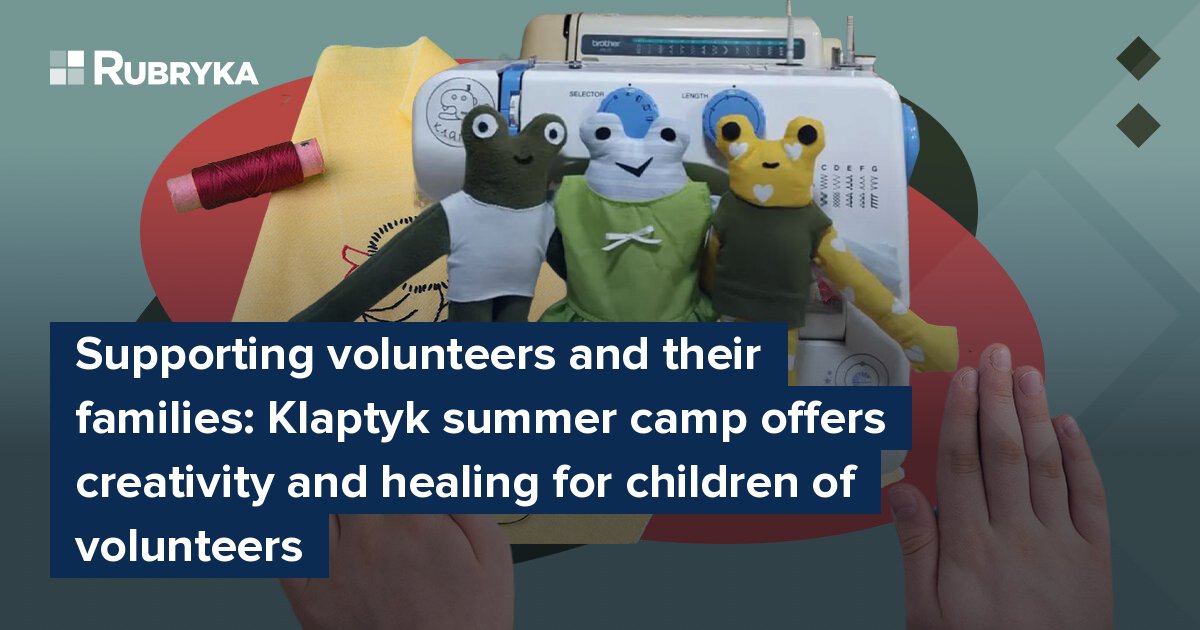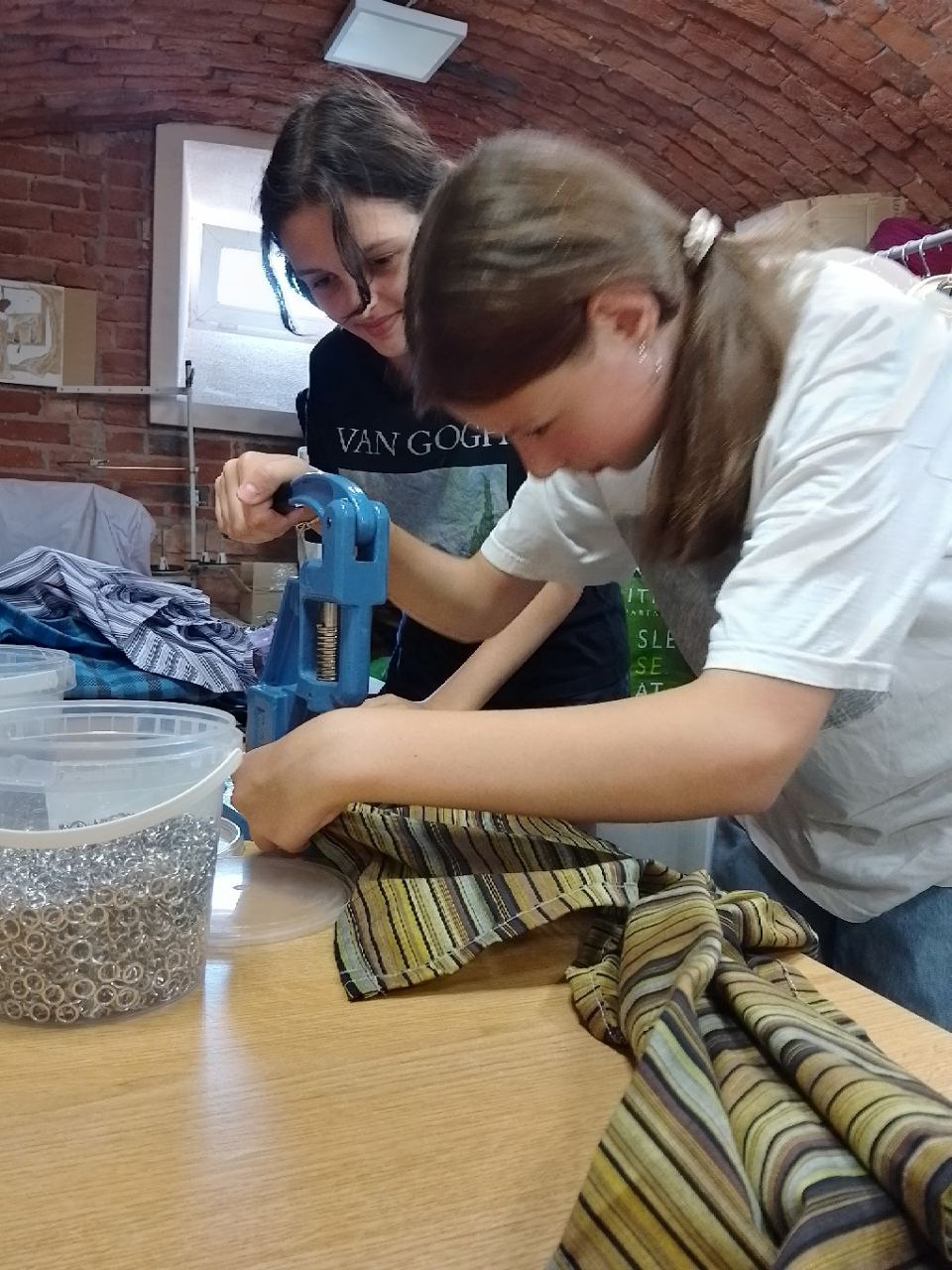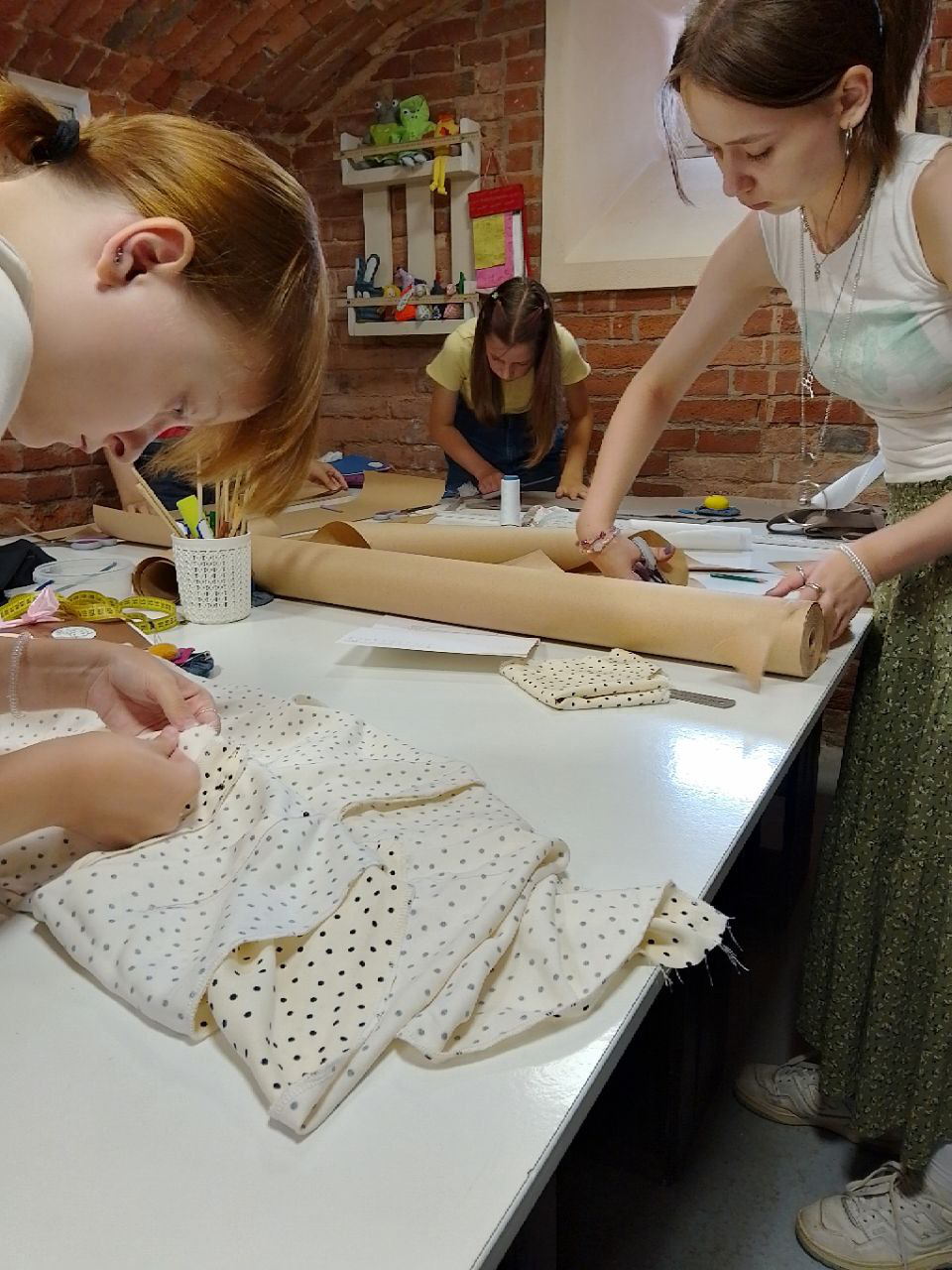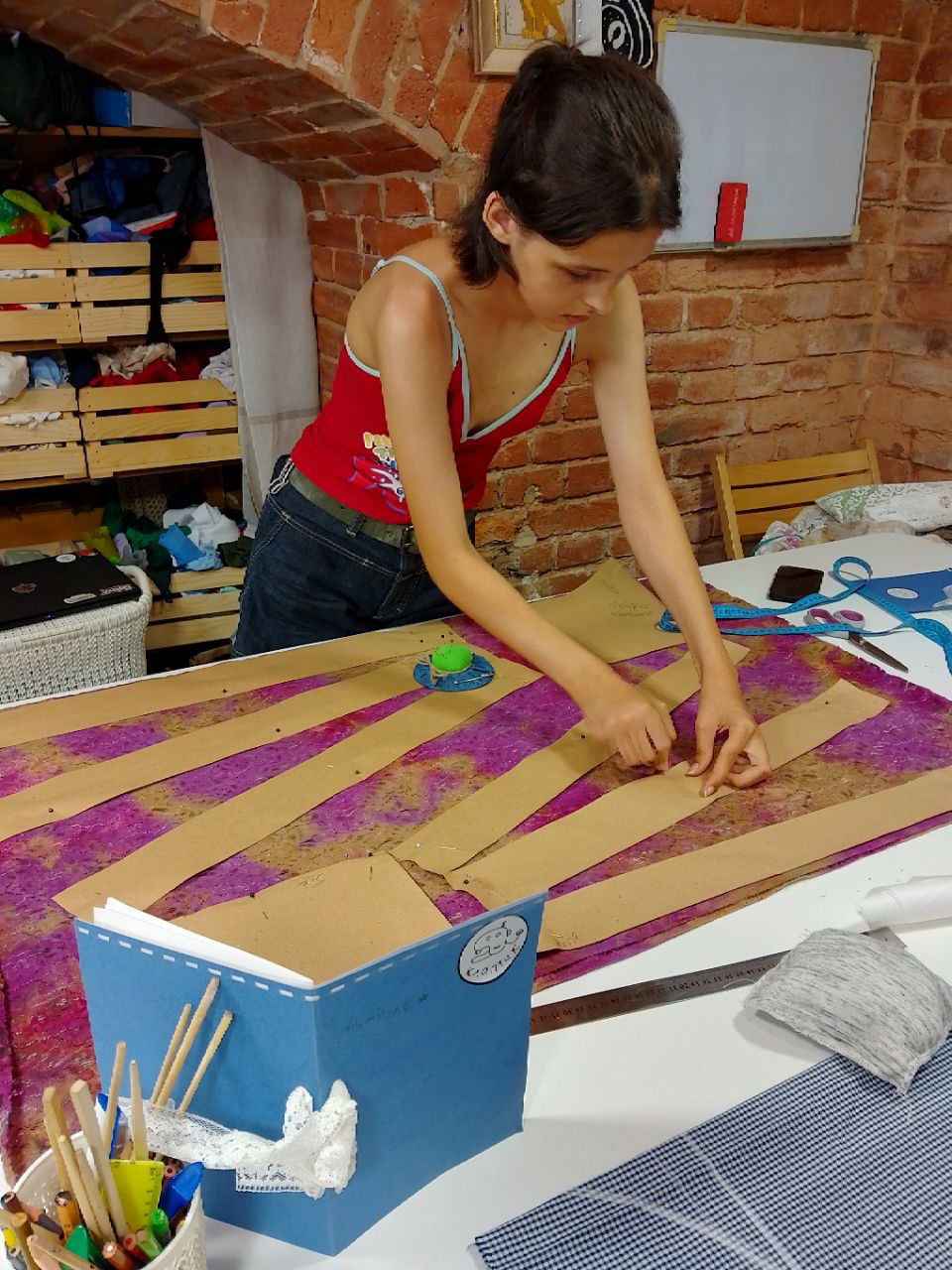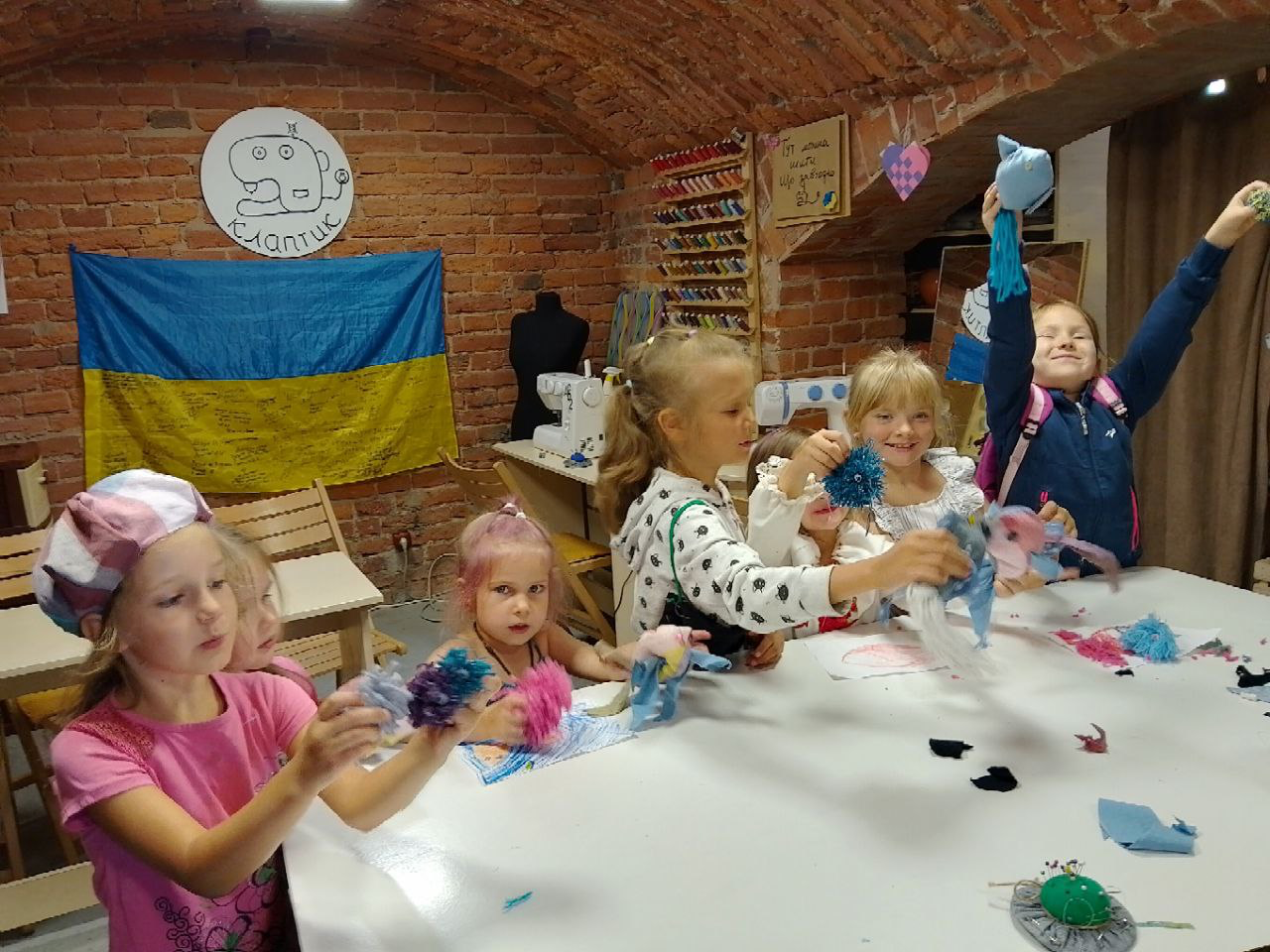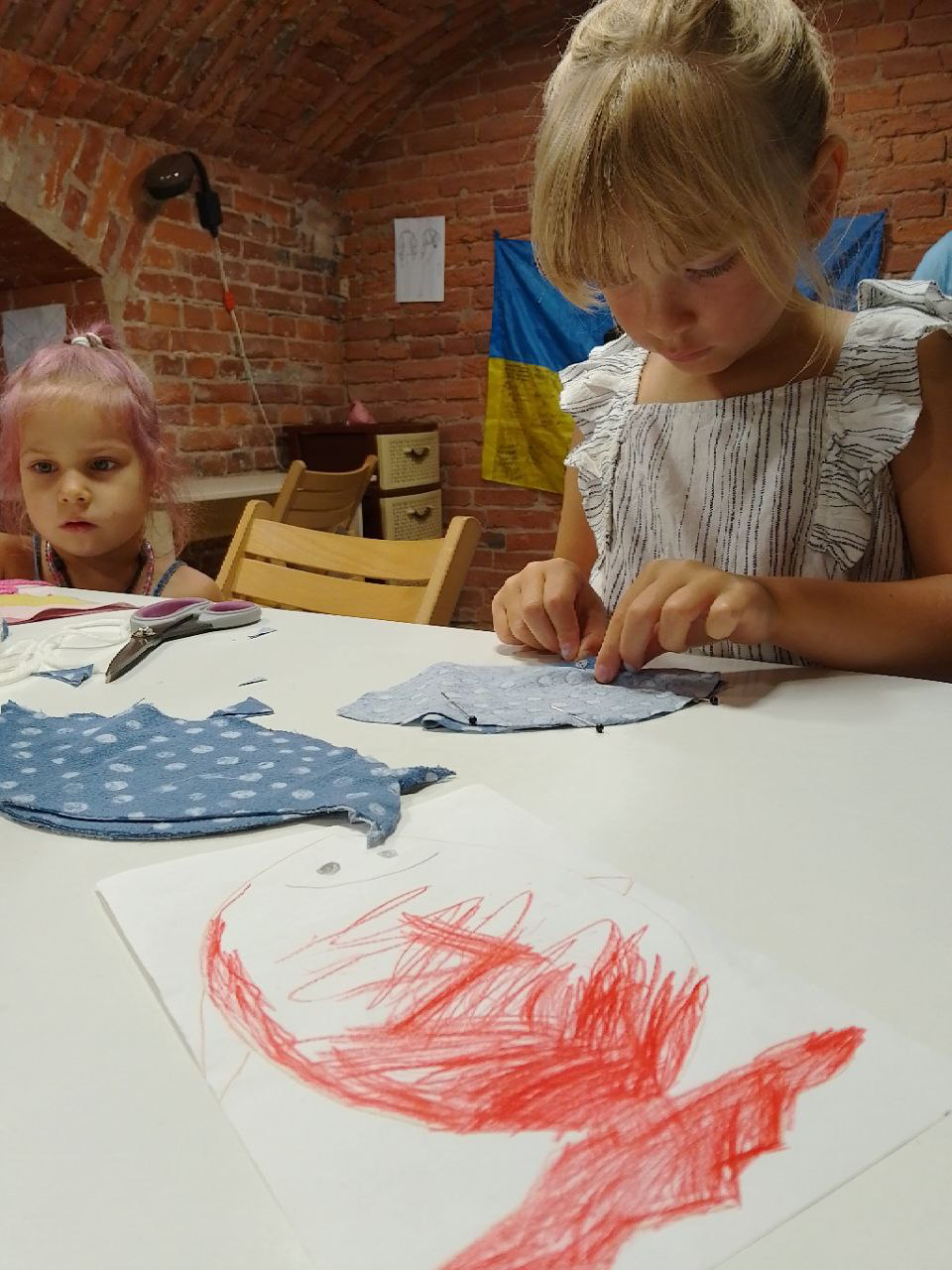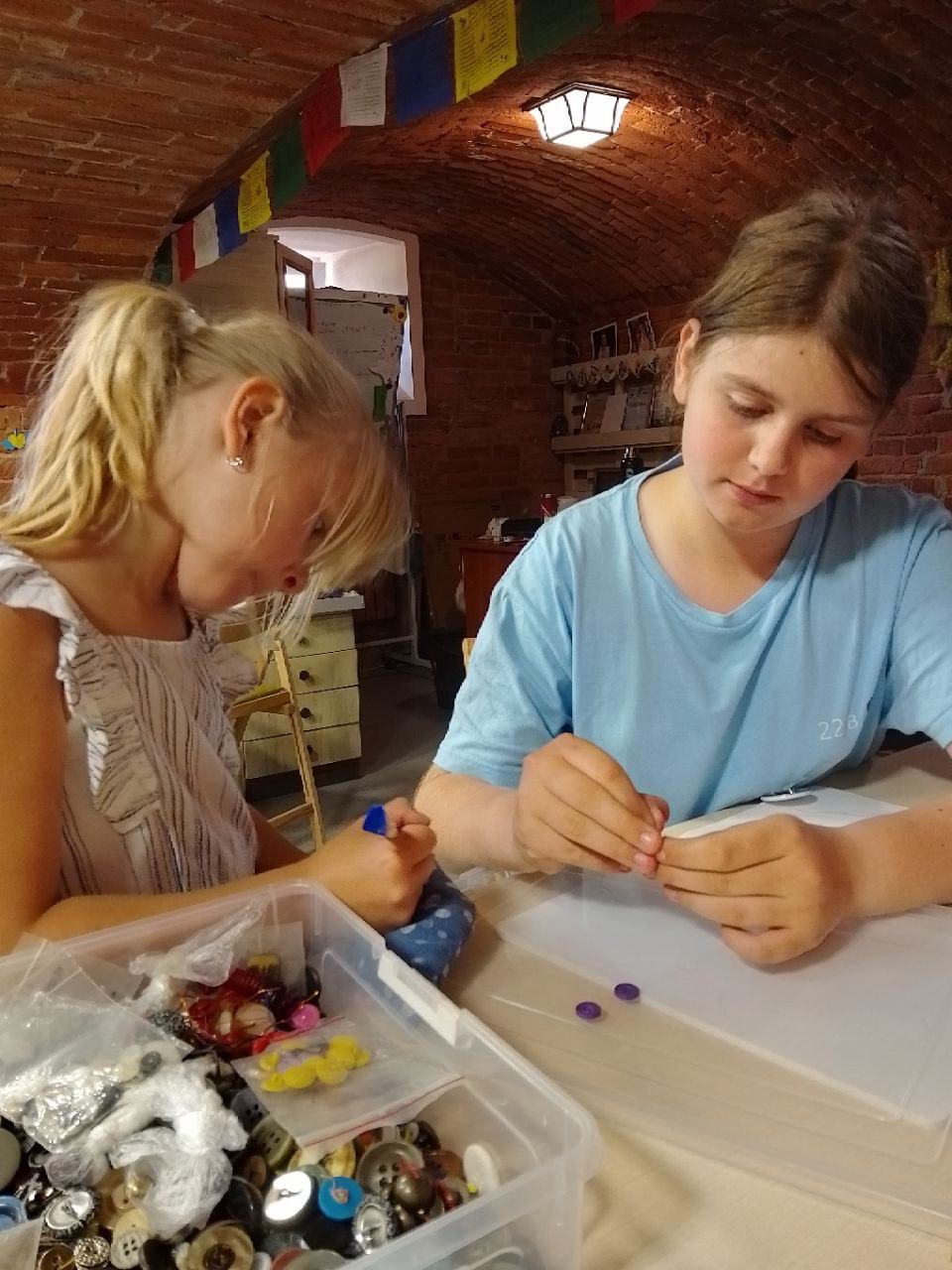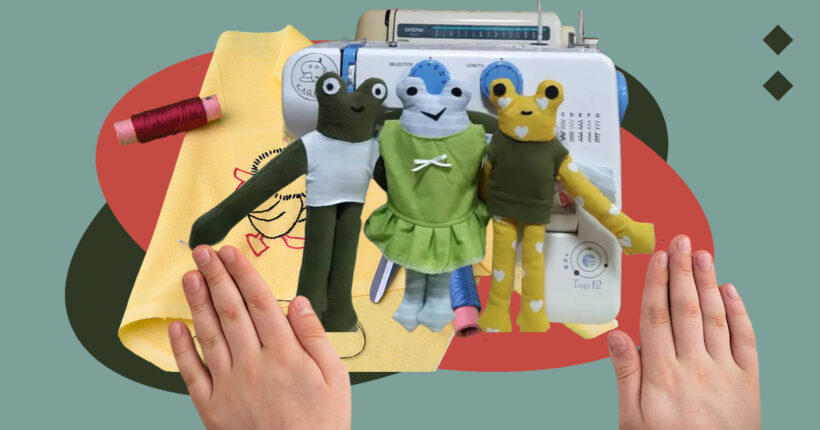
What is the problem?
Volunteers give their time for free, often at the expense of their family, loved ones, health, careers, and finances. But who supports the volunteers?
"Many times, we are our only source of support. We help each other because we understand how crucial it is. Volunteering is a true sacrifice—we experience burnout and exhaustion. I often ask myself, 'Do I still want to do this? Can I keep going? I need a break!' But admitting that can feel shameful. However, when support is there, when you see others taking action too, it lifts your spirits. That feeling gives you the strength to continue, as if new doors are opening," says Ivano-Frankivsk entrepreneur and volunteer Nataliia Filippska.
What is the solution?
This summer, Filippska, founder of the Creative Workshop and Sewing Coworking Space "Klaptyk," (a Ukrainian word meaning "patch" or "scrap,") partnered with the NGO "Ukrainian Youth Group" to organize a series of free themed camps for children from volunteer families. The camps welcome both young volunteers and the children of volunteers, giving parents some free time while participants learn tailoring skills, explore their creativity, enjoy meaningful activities, socialize, and discover new things.
How does it work?
Volunteers from "Klaptyk"
"Klaptyk" is a creative space in Ivano-Frankivsk that has been fostering artistic ideas for over seven years. It hosts various workshops, courses, meetings, and presentations. The coworking space also features a sewing club for schoolchildren and regularly organizes handmade-themed camps during the holidays.
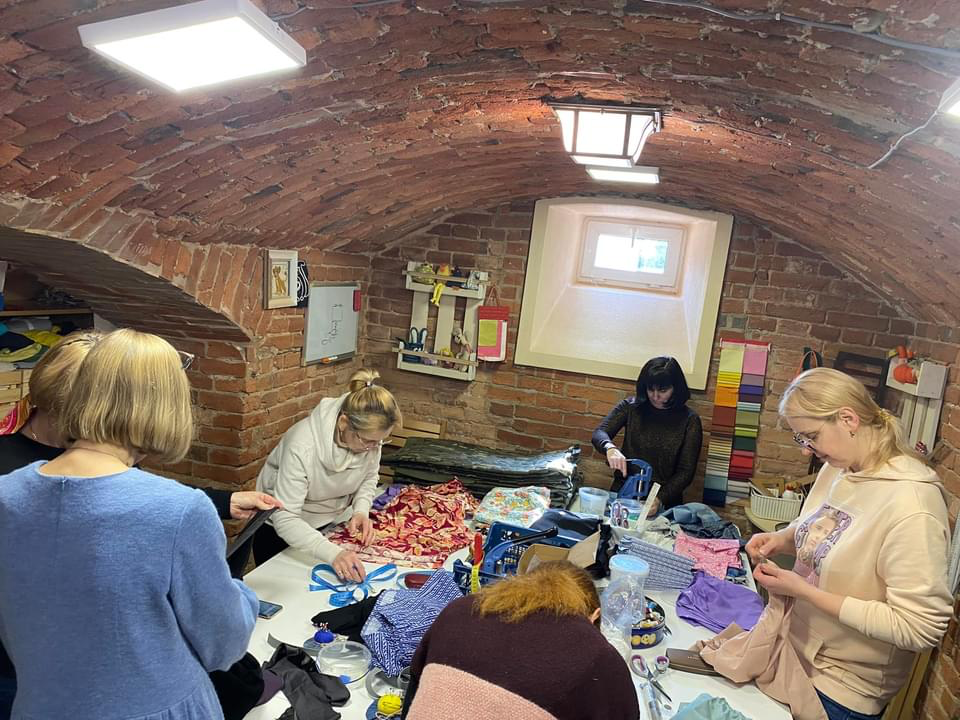
Ivano-Frankivsk volunteers at the "Klaptyk" sewing coworking space. Photo courtesy of the Creative Workshop and Sewing Coworking Space "Klaptyk" archive
With the outbreak of war, the "Klaptyk" sewing coworking space transformed into a hub for volunteer efforts. Initially, the sewing community produced overalls and camouflage gear, but since 2023, volunteers have shifted their focus to sewing adaptive clothing—pants, shorts, and undergarments—for wounded soldiers undergoing rehabilitation. According to Filippska, there was a severe shortage of skilled workers, so with the support of local NGOs, the coworking space began offering free sewing courses, training anyone willing to help in making clothes for the wounded. This is how many became volunteers at "Klaptyk."
Filippska emphasizes that all of these volunteers have children. Wanting to support volunteer parents—giving them more time for their work, personal needs, or simply to rest—she and her team organized a free camp for their children. The goal was to ease the burden on parents, many of whom were on the verge of burnout, both physically and financially.
Notably, "Klaptyk" volunteers include not only adults but also children and teenagers. That's why the "Klaptyk Summer" camp was created—to bring together both the children of volunteers and young volunteers themselves.
What is "Klaptyk Summer"?
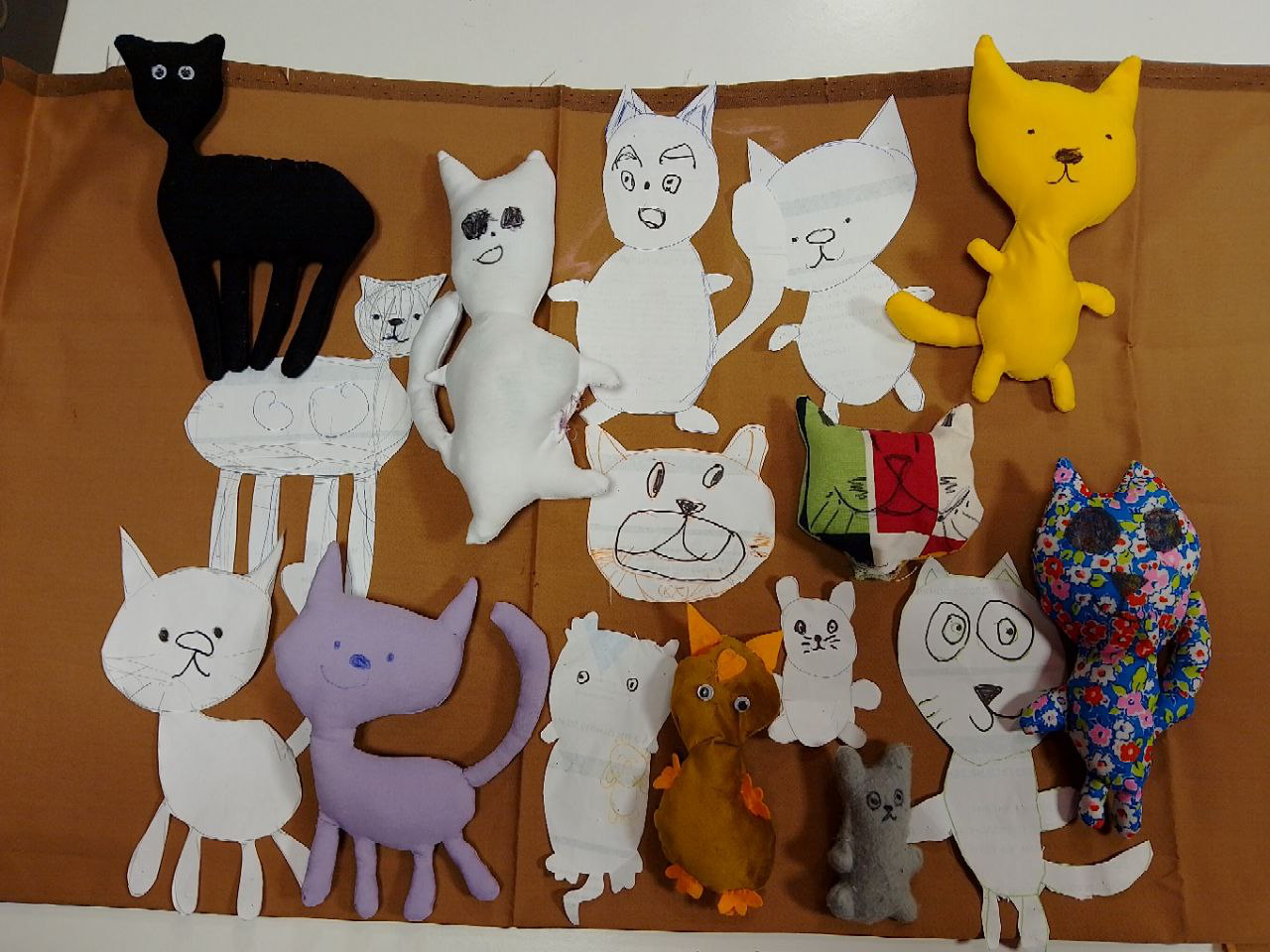
Children love to sew cats. Photo from the archive of the Creative Workshop and Sewing Coworking Space "Klaptyk"
The sewing camp "Klaptyk Summer for Children of Volunteers" is designed for children and teenagers aged 4 to 16 and is completely free for participants. The organizers were able to fund the camp with support from the Warm City Grants program.
In practice, "Pattern Summer" consists of four creative sessions, each lasting a week and tailored to different age groups—preschoolers, middle schoolers, and teenagers. Despite being called a "sewing" camp, it is about much more than just sewing; it focuses on creativity inspired by sewing. The organizers' approach is to encourage children to explore their ideas freely, supporting whatever they choose to create.
With the guidance of teachers and volunteer assistants, children sew, crochet, and felt, crafting toys, clothing, bags, and backpacks. They decorate and embellish their creations while also enjoying outdoor activities—going on themed excursions, playing, and even having picnics when the weather is nice!
We don't have the word "impossible"
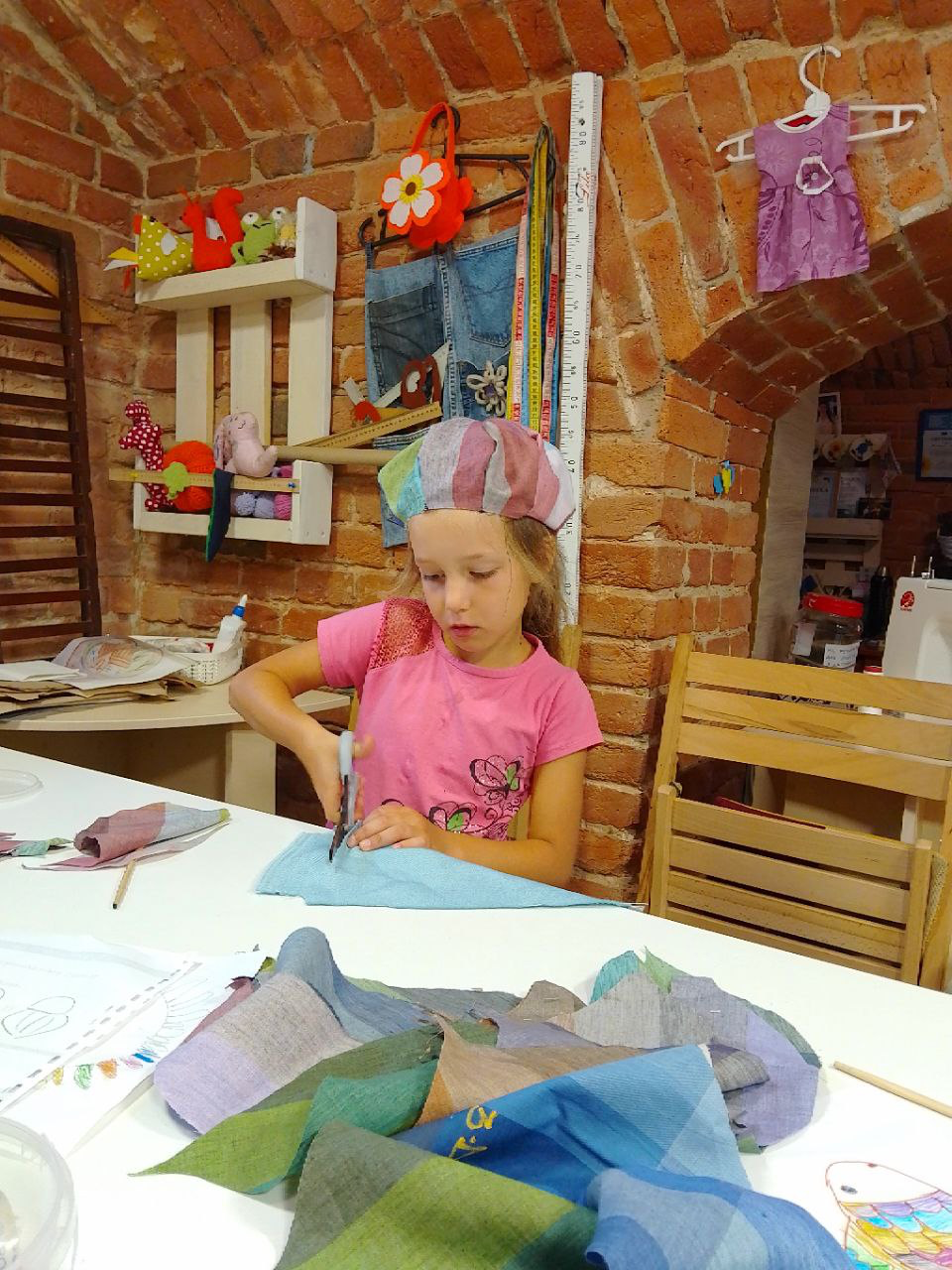
Fish costume is in the making. Photo from the archive of the Creative Workshop and Sewing Coworking Space "Klaptyk"
"We don't just teach sewing, we help bring to life the ideas children have in their minds," explains the camp organizer. "Our approach is to give the child more freedom, to observe, guide, and not restrict them. We only suggest a theme. For example, preschoolers and younger schoolchildren enjoy making toys, while teenagers are more interested in creating clothing for themselves."
For this reason, there are no master classes at the camp. According to Filippska, while master classes are great for learning new skills, they often involve templates where everyone ends up creating the same thing. At the "Klaptyk Summer" camp, children create unique crafts based on their personal preferences.
"This is probably the most important aspect of our approach to children," says Filippska with a smile. "Children never fail to surprise us with their creativity and ideas." She recalls one instance when a boy wanted to sew a hamburger—complete with layers of sausage, lettuce, tomato, and even red onion. "My colleague and I looked at each other, thinking, 'Oh my god, how are we going to make this?!' But out loud, we said, 'Wow, this is really interesting, okay, let's give it a try!'"
The initiator of the sewing camp emphasizes that sewing is much more than it seems at first glance. It fosters imagination, fine motor skills, 3D thinking, and engineering thought processes. It involves math, drawing, and geometry, as children "build" figures and turn flat shapes into three-dimensional ones. It's even a bit of chemistry, especially when considering materials science or learning how to remove stains from clothes.
Does it really work?
For teenagers…
The first teenage camp session took place in July. Express classes in modeling and design, as well as cutting and sewing, helped the participants develop their style and even refresh their wardrobes a bit.
"In just one week, we sewed several skirts and a sundress," says Filippska, proudly reflecting on her students' progress.
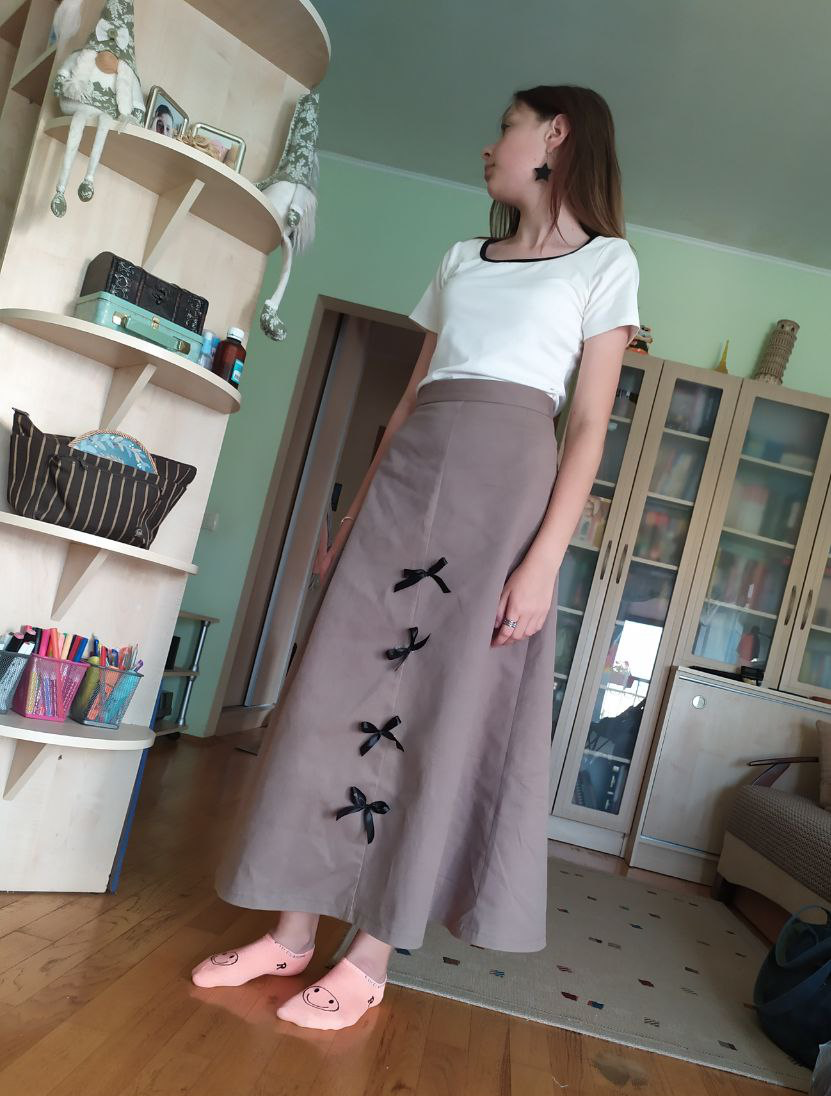
Varvara in a skirt she made herself at the sewing camp. Photo provided by her mother, Iryna Malakhova
Iryna is the mother of 13-year-old Varvara, a participant in the camp. Iryna volunteers at the space, helping sew adaptive underwear for wounded defenders. She encourages her daughter to sew, knit, and be creative in any way she can. Varvara has also gotten involved in volunteering—she and the other children at school and in the neighborhood wove bracelets, which they sold to passersby to raise money for the military. The girl also contributed by making shopping bags for charity auctions. At the "Klaptyk Summer" sewing camp, Varvara sewed a skirt for herself, "upcycling" her mother's old pants.
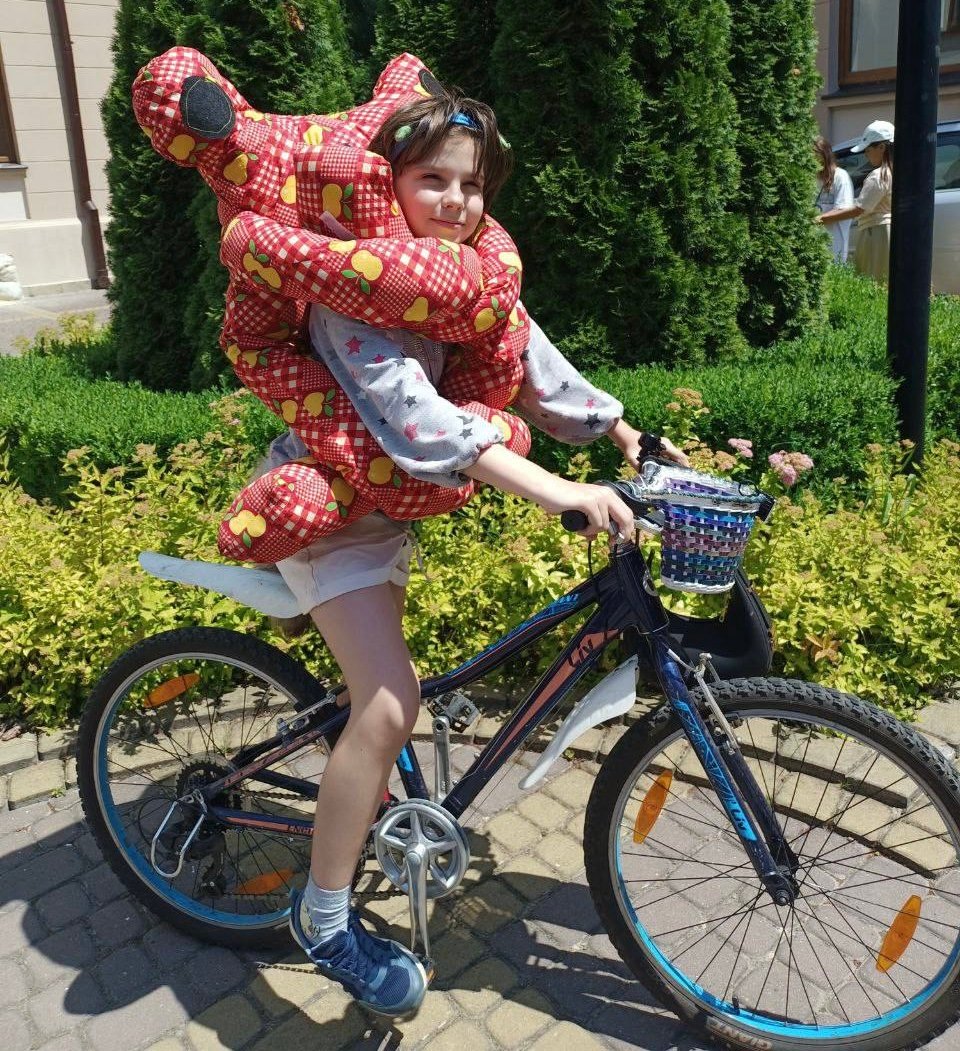
Big Frog (toy pillow) that fifth-grader Oleksandra sewed herself. Photo provided by the girl's mother Olha Surovska
Twelve-year-old Oleksandra, who visits the space, sewed pants, zippered sweatshirts, and a T-shirt and shorts for her toys. She even designed the T-shirt herself. Oleksandra's mother shares that the teenager goes to "Klaptyk" with great enthusiasm: she first learned needlework there, and during the war, she began to help as a volunteer.
"Everything my child knows about sewing, she learned at 'Klaptyk.' At first, she started with small projects, like fabric 'snowballs' that children threw around, and then she moved on to making patterns, sewing soft toys, stuffing them, and even creating her own characters. She has a million ideas for cats, crocodiles, and frogs," says Olha Surovska.
Surovska also notes that the approach to classes at "Klaptyk" truly works:
"Children interact with Filippska as equals, like friends. They share jokes and stories. They come together, helping one another. And when Filippska went abroad, they gathered to sew a special flag for her as a memento of their time together. For the development and shaping of a child's personality, it's all really wonderful!" says Surovska.
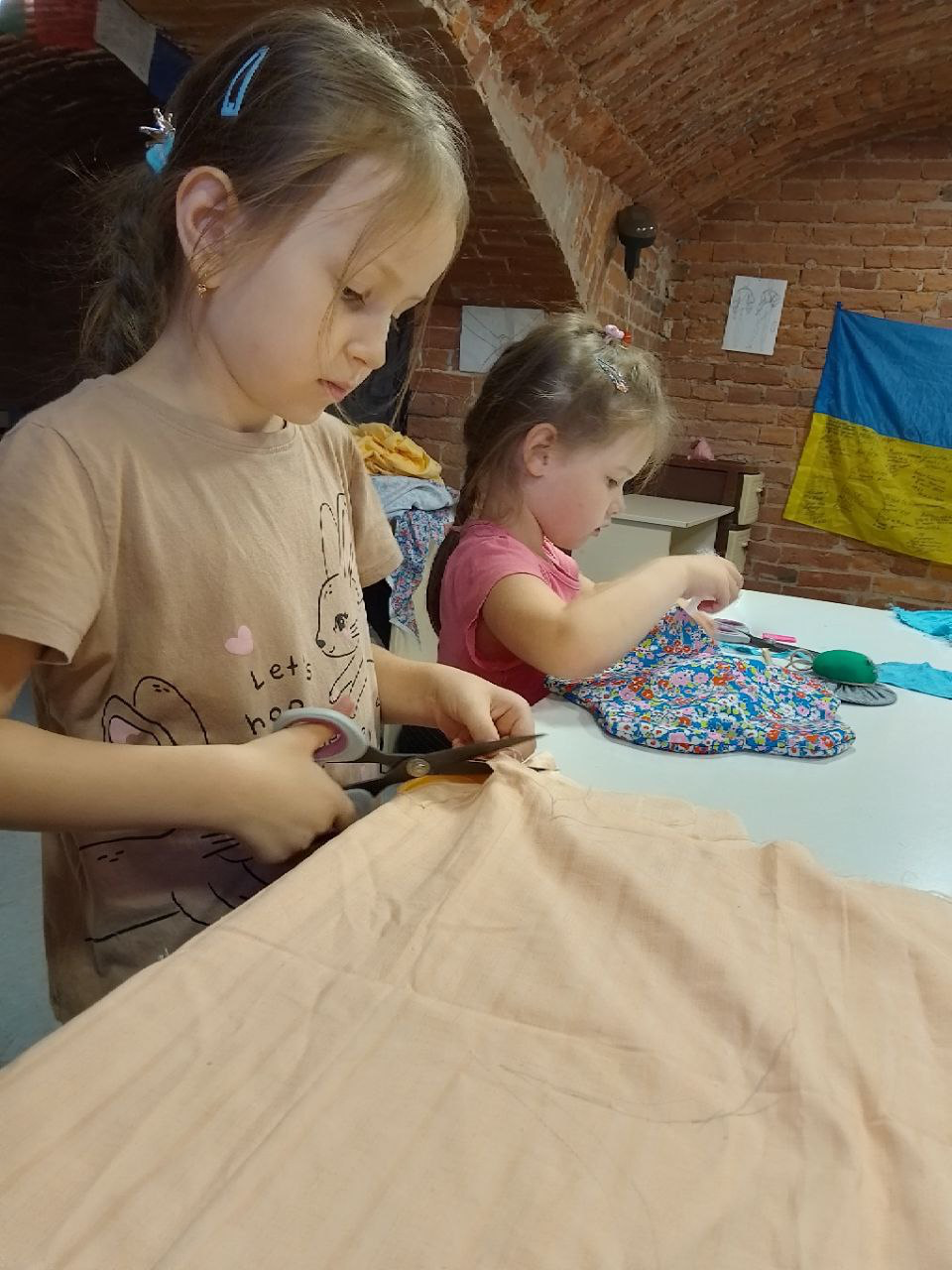
The youngest participants of the "Klaptyk Summer" camp are preparing to build and furnish a hut by making pillows in the shapes of flowers, hearts, and butterflies. Photo from the archive of the "Klaptyk" Creative Workshop and Sewing Coworking Space
For the youngest
Some might think that teaching teenagers to sew is easy, but what can 4-6 year olds do at a sewing camp? Filippska laughs—she's heard this question more than once. She admits that with the little ones, they spend more time playing, reading, and walking, but they also find time to sew. With the help of adults, the children create toys that they later play with themselves.
"Every day we have a new story. For example, we read a fairy tale with the children. They choose a character from that fairy tale, and we 'bring' that character to life from the pages of the book," says Filippska.
On the first Monday of the "youngest" session, it was "fish day." The children imagined themselves going to the sea, listened to a fairy tale about a wolf cub who, after reaching the shore, swam far away without thinking. Then, everyone sewed fish and reenacted the fairy tale through role play.
Of course, a small child can't sew something by themselves from start to finish. However, children draw "sketches", choose fabrics, and explain to adults exactly what they want their toy to look like. The teachers show them how to properly use scissors, a sewing machine, pins, and needles, while also introducing the child to safe sewing techniques.
"You could say we do everything instead of the child, but with the child's participation. It might seem like the child is doing everything on their own. We don't immediately put them at the sewing machine; instead, the child sits next to it or on our lap and helps. For example, they pin or remove pins, turn the wheel, or press a button to make a fastener. These are very simple tasks that we allow according to safety standards. Over time, the child will develop the necessary skills, but right now, they're learning how the entire process works. They gain confidence and are no longer afraid of making mistakes," explains Filippska, outlining her approach.
Even more useful solutions!
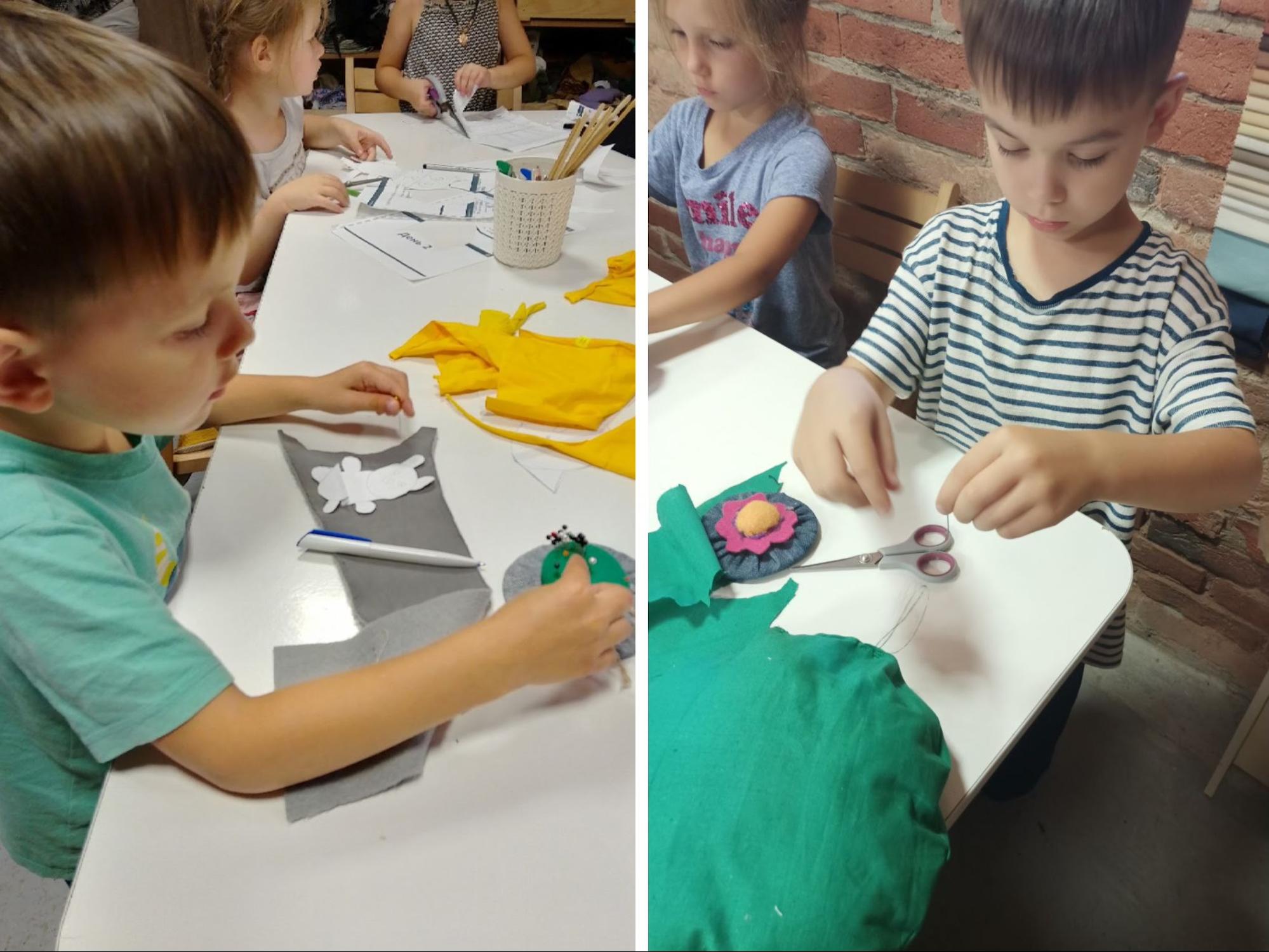
Lev and Artur Yastrebovy at the "Klaptyk Camp." Photo provided by the boys' mother, Yulia. Photo from the archive of the Creative Workshop and Sewing Coworking Space "Klaptyk."
By the way, "Klaptyk Summer" is also about gender equality and challenging gender stereotypes. After all, boys participate in the camp as well:
"The stereotype that sewing is not a man's job is often imposed by society. I am grateful to those parents who overcome this gender bias and explain to their children—or even to their own parents and relatives—why boys can also sew. It's a creative field where anyone can do what they love," comments the founder of the sewing coworking space.
Yulia Yastrebova is the mother of 7-year-old Artem and 5-year-old Lev. She shares that her boys were thrilled. The older one, Artem, was especially happy because he had the chance to sew on a sewing machine by himself, cut out, and sew a toy. "He came home with glowing eyes, so happy, telling me about how great the teachers were. He was truly satisfied." The younger Levchyk was initially upset when he noticed there were only girls that day, but after getting to know them, he said he'd made friends with a girl. He was delighted by the sewing process, the opportunity to sit at the machine, and learning how to make a halabuda (a traditional toy). Now, the boys can't part with their new toys and proudly tell everyone that they made them on their own.
"It feels completely natural to me that boys sew and knit; it's just another way for them to learn about the world. My children were excited to go to camp, where they could create and sew their own toys. When we were under occupation [Yulia and her children are IDPs from the Kherson region], I sewed toys for them out of my old children's T-shirts and pants. They still sleep with those toys. As Artur told me, those are the best toys of their lives," shares Yastrebova.
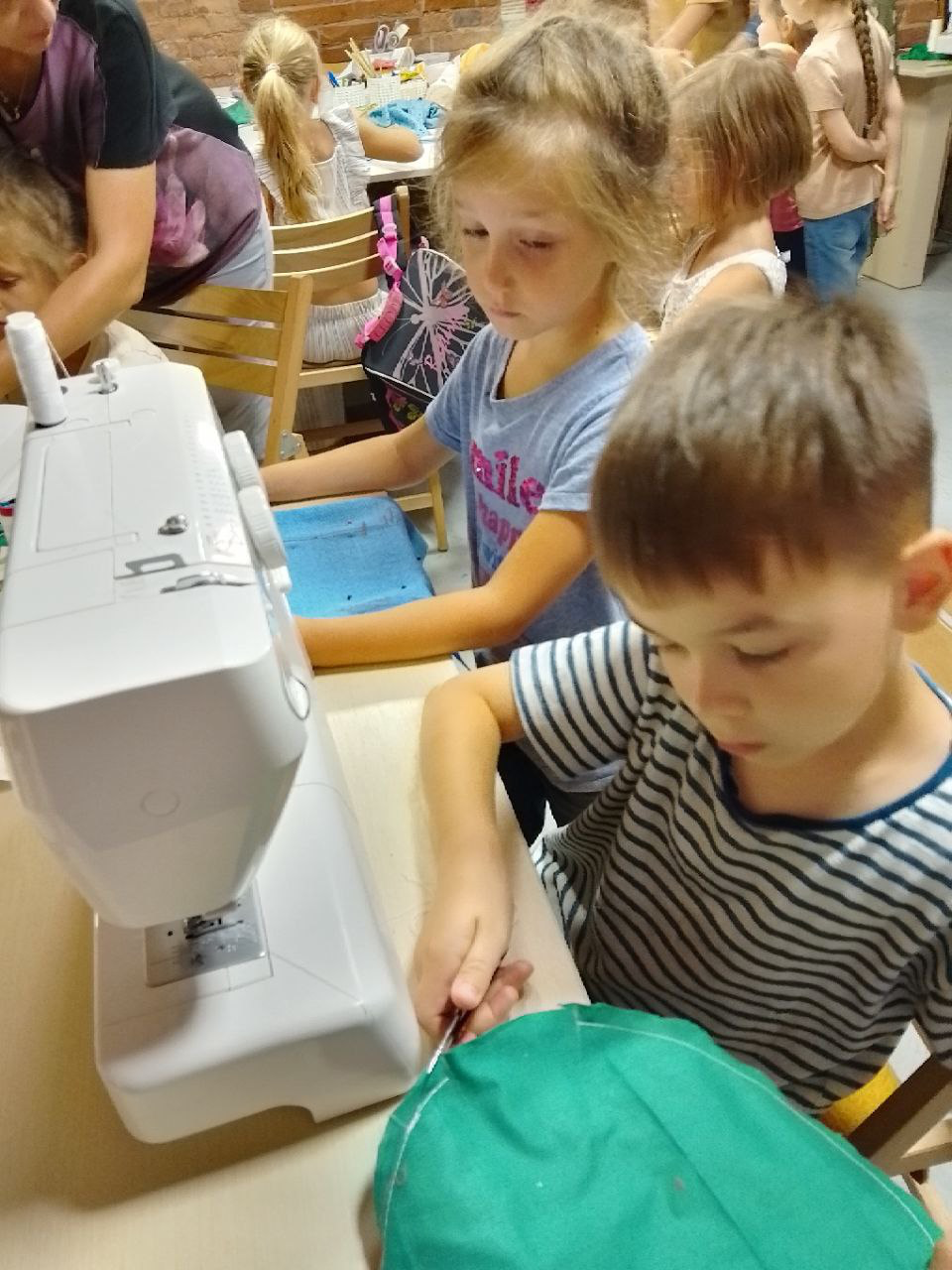
Artur makes a blank for a mantis pillow. Photo from the archive of the Creative Workshop and Sewing Coworking Space "Klaptyk."
For Levc, Artur, and other IDP children, the sewing camp also served as psychological support.
"When we moved to Ivano-Frankivsk, they were initially very intimidated, didn't trust others, and looked at everything with suspicion. It's crucial that a child who has experienced war learns to come out of their shell again, to notice something good and pleasant. They need to see that there is light and sunshine, that they don't have to be afraid of air raids, explosions, or look out the window to see foreign soldiers and fear that someone will come. That's why such initiatives are so necessary, and it's wonderful that children have a place to communicate, learn something new, and distract themselves from the memories," Yastrebova believes.


